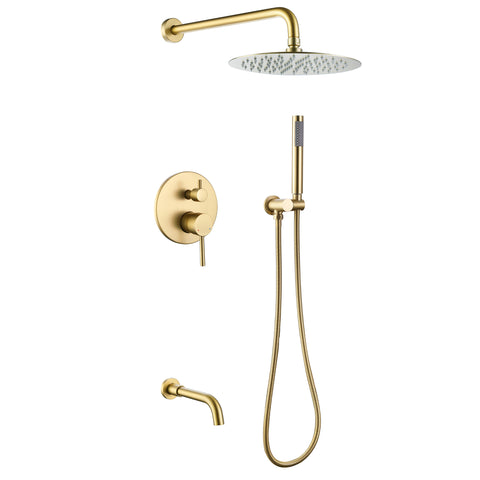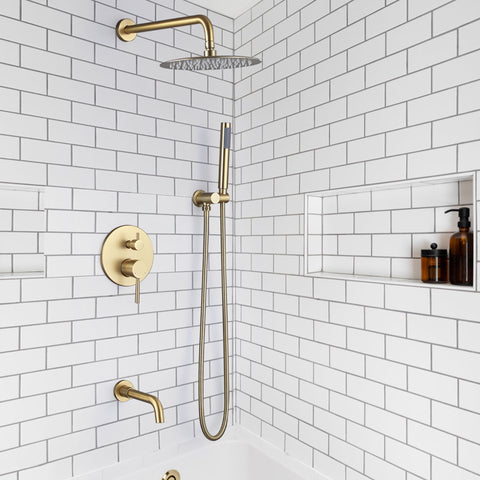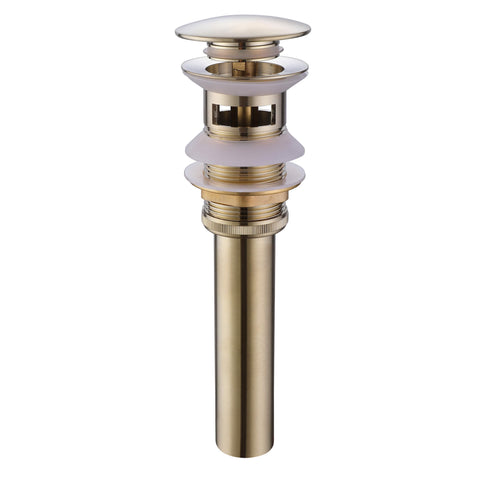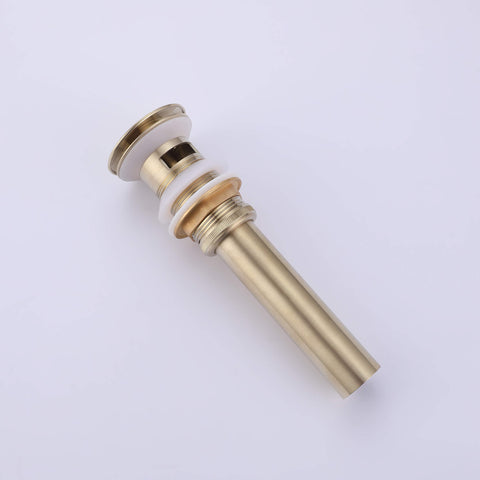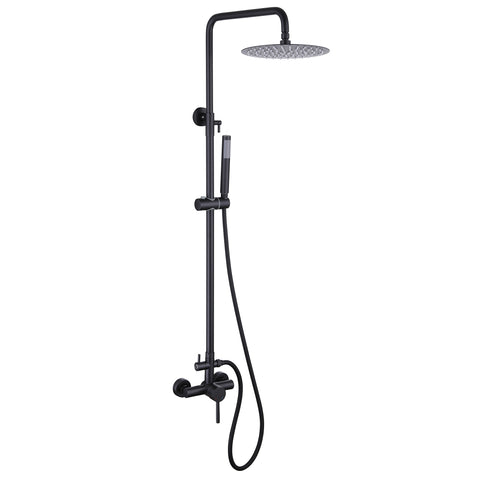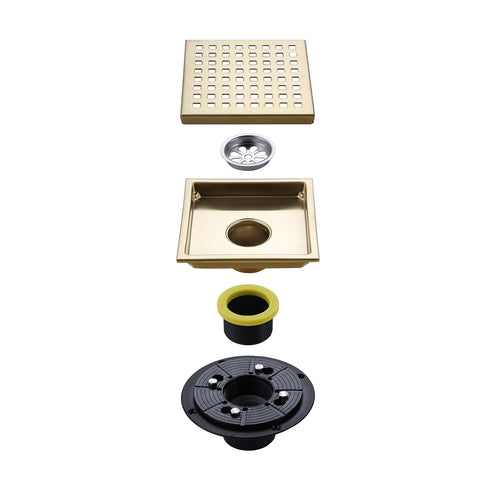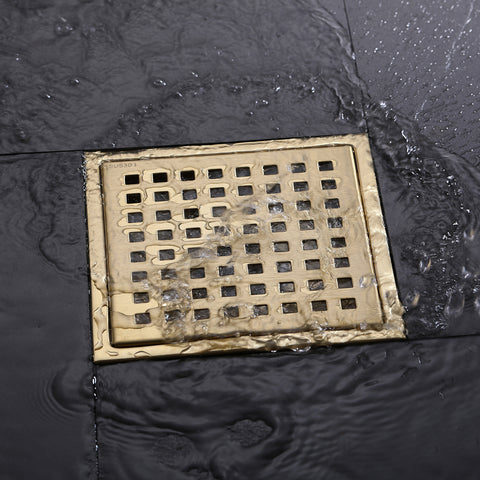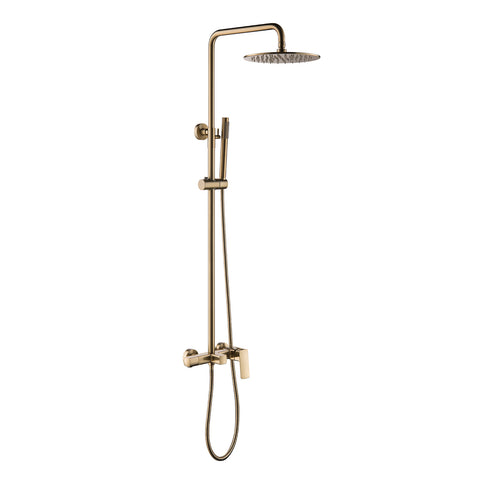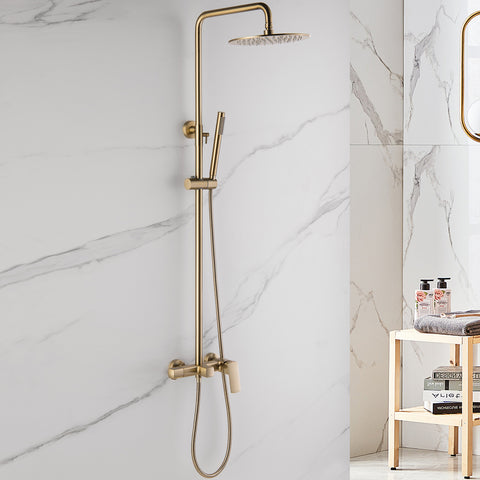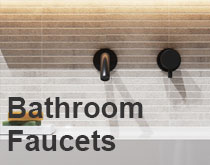Say Goodbye to Leaky Faucets: Why Shower Faucet Valve Replacement is Essential
Say goodbye to the hassle of a leaking shower faucet and enjoy a stress-free showering experience! Replacing your shower faucet valve is a crucial step in ensuring your bathroom remains functional and conserves water. Don't let a dripping shower faucet be overlooked, as it can lead to significant water wastage and skyrocket your utility bills.
At RBROHANT, with our cutting-edge technology and top-quality products, you can trust that RBROHANT delivers exceptional results. Our shower faucet valves are tailor-made to your specific needs, ensuring an unparalleled showering experience.
Don't let a leaking faucet ruin your day. Contact RBROHANT now and discover why our shower faucet valve replacement is key to a leak-free and enjoyable shower experience.
Signs that indicate the need for shower faucet valve replacement
A shower faucet valve is a crucial component of your bathroom plumbing system. It controls the flow and temperature of water, allowing you to enjoy a comfortable and refreshing shower. Over time, these valves can wear out due to regular use, leading to leaks and other issues. This is where shower faucet valve replacement becomes essential.
- Preventing Water Wastage: One of the primary reasons why shower faucet valve replacement is important is to prevent water wastage. A leaky faucet can waste gallons of water every day, resulting in higher utility bills and an unnecessary strain on the environment. By replacing the faulty valve, you can ensure that your shower remains water-efficient.
- Avoiding Structural Damage: Leaky faucets not only waste water but can also cause structural damage to your bathroom. Water seeping into walls, floors, and ceilings can lead to mold growth, rotting wood, and deteriorating infrastructure. By replacing the shower faucet valve promptly, you can avoid costly repairs and maintain the integrity of your bathroom.
- Improving Water Pressure: A faulty shower faucet valve can also impact the water pressure in your shower. If you notice a decrease in water pressure or uneven flow, it could be a sign that your valve needs to be replaced. Upgrading to a new valve can help restore optimal water pressure, ensuring a more enjoyable shower experience.
Understanding the shower faucet valve
It's important to be aware of the signs that indicate the need for shower faucet valve replacement. Ignoring these signs can lead to further damage and more expensive repairs down the line. Here are some common indicators that it's time to replace your shower faucet valve:
- Leaking Faucet: The most obvious sign is a leaking faucet. If you notice water dripping from the showerhead or handles even when the faucet is turned off, it's a clear indication that the valve is no longer functioning properly.
- Difficulty Adjusting Water Temperature: If you find it challenging to adjust the water temperature in your shower, it could be due to a faulty valve. A worn-out valve may not effectively regulate the hot and cold water, resulting in inconsistent temperatures.
- Inconsistent Water Flow: If you experience inconsistent water flow, such as sudden bursts or weak streams, it could be a sign of a faulty valve. The valve may not be opening or closing properly, leading to irregular water flow patterns.
- Corrosion or Mineral Buildup: Over time, mineral deposits and corrosion can accumulate on the valve, affecting its performance. If you notice signs of corrosion or mineral buildup around the shower faucet, it's a good indication that the valve needs to be replaced.DIY vs. professional shower faucet valve replacement
DIY vs. professional shower faucet valve replacement
Before diving into the process of shower faucet valve replacement, it's essential to understand the different types of valves commonly used in showers. The type of valve you have will determine the steps involved in the replacement process. Here are the three main types of shower faucet valves:
- Compression Valve: Compression valves are the oldest type of shower faucet valves. They consist of rubber washers that create a seal when the handle is tightened. However, these valves are prone to wear and tear, leading to leaks over time.
- Ball Valve: Ball valves use a single lever to control both the temperature and water flow. They are more durable than compression valves and offer smoother operation. However, ball valves can still develop leaks or other issues that may require replacement.
- Cartridge Valve: Cartridge valves are the most common type of shower faucet valves used today. They feature a cartridge that controls the water flow and temperature. Cartridge valves are known for their reliability and ease of maintenance. If you have a cartridge valve, replacing it is relatively straightforward.
Steps to replace a shower faucet valve
When it comes to shower faucet valve replacement, you may be wondering whether to tackle the job yourself or hire a professional. While DIY projects can be rewarding, it's essential to consider the complexity of the task and your level of expertise. Here are some factors to consider when deciding between a DIY approach and hiring a professional:
- Skills and Experience: Shower faucet valve replacement requires plumbing knowledge and experience. If you have prior experience or are confident in your abilities, you may be able to handle the replacement yourself. However, if you're unsure or lack the necessary skills, it's best to leave it to the professionals to avoid any potential damage or mistakes.
- Tools and Materials: Replacing a shower faucet valve requires specific tools and materials. If you don't already have these on hand, you'll need to invest in them. Professional plumbers come equipped with all the necessary tools and materials, saving you the hassle and expense of purchasing them yourself.
- Time and Convenience: DIY projects can be time-consuming, especially if you're new to plumbing. It's important to consider whether you have the time and patience to complete the replacement successfully. Hiring a professional ensures that the job is done efficiently, allowing you to focus on other tasks and enjoy a hassle-free shower experience.
Tools and materials needed for shower faucet valve replacement
If you've decided to tackle the shower faucet valve replacement yourself, here are the general steps involved in the process. Keep in mind that these steps may vary depending on the type of valve you have and the specific shower system:
- Turn Off the Water: Before starting the replacement, turn off the water supply to your shower. This can usually be done by shutting off the main water supply or locating the shut-off valves specific to your shower.
- Remove the Handle and Trim: Remove the handle and trim of the shower faucet to access the valve. This may involve unscrewing or prying off decorative covers or screws.
- Remove the Old Valve: Depending on the type of valve, you may need to unscrew or unclip it from the plumbing system. Follow the manufacturer's instructions or consult a professional if you're unsure.
- Install the New Valve: Insert the new valve into the plumbing system, ensuring a secure fit. Make sure to follow the manufacturer's instructions and consider using plumber's tape or sealant for added security.
- Reassemble and Test: Once the new valve is installed, reassemble the handle, trim, and any other components you removed earlier. Turn on the water supply and test the shower to ensure that the new valve is functioning correctly.
It's important to note that these steps provide a general overview of the shower faucet valve replacement process. Depending on your specific shower system and valve type, there may be additional steps or considerations. If you're unsure or uncomfortable with any part of the process, it's best to consult a professional.
Common mistakes to avoid during shower faucet valve replacement
To successfully replace a shower faucet valve, you'll need the following tools and materials:
- Adjustable Wrench: An adjustable wrench is essential for loosening and tightening various fittings during the replacement process.
- Screwdriver: A screwdriver, both flathead and Phillips, will be needed to remove screws and fasteners.
- Plumber's Tape: Plumber's tape, also known as Teflon tape, is used to create a watertight seal between threaded connections.
- Pipe Cutter: If you need to cut pipes during the replacement process, a pipe cutter will be necessary.
- New Valve: Make sure to purchase a new shower faucet valve that is compatible with your specific shower system. Consult a professional or refer to the manufacturer's guidelines if you're unsure.
- Replacement Parts: Depending on the condition of your existing shower faucet, you may need additional replacement parts such as washers, O-rings, or cartridges.
Having these tools and materials readily available will ensure a smoother and more efficient shower faucet valve replacement process.
Benefits of hiring a professional for shower faucet valve replacement
While shower faucet valve replacement may seem straightforward, there are some common mistakes that DIY enthusiasts should avoid:
- Skipping the Water Shut-Off: Always remember to turn off the water supply to your shower before starting the replacement. Failing to do so can result in water damage or unnecessary mess.
- Not Identifying the Valve Type: Different valve types require different replacement procedures. Make sure to identify the type of valve you have and follow the appropriate steps.
- Forgetting to Test for Leaks: After completing the replacement, it's crucial to thoroughly test for any leaks. Failing to do so can lead to hidden leaks that may cause further damage.
- Over-Tightening or Under-Tightening: When reassembling the shower faucet, be careful not to over-tighten or under-tighten the fittings. Over-tightening can damage the components, while under-tightening can result in leaks.
- Ignoring Manufacturer's Guidelines: Always refer to the manufacturer's guidelines or instructions for the specific valve you are replacing. Ignoring these guidelines can lead to improper installation and potential issues.
To ensure a successful shower faucet valve replacement, take your time, follow the correct procedures, and don't hesitate to seek professional help if needed.
Frequently asked questions about shower faucet valve replacement
While some DIY enthusiasts may be inclined to replace their shower faucet valve themselves, there are several benefits to hiring a professional plumber for the job:
- Expertise and Experience: Professional plumbers have the necessary expertise and experience to handle shower faucet valve replacement efficiently. They are familiar with different valve types, plumbing systems, and potential complications that may arise during the process.
- Time and Convenience: Hiring a professional allows you to save time and effort. They will handle all aspects of the replacement, from diagnosing the issue to acquiring the necessary tools and materials. This frees up your time to focus on other tasks or simply enjoy a stress-free day.
- Quality Workmanship: Professionals strive for excellence in their work. By hiring a professional, you can expect high-quality workmanship and attention to detail. They will ensure that the replacement is done correctly, minimizing the risk of future issues or leaks.
- Warranty and Guarantee: Reputable plumbing companies often provide warranties or guarantees on their work. This means that if any issues arise after the replacement, they will rectify them at no additional cost. This provides peace of mind and protects your investment.
- Safety and Compliance: Plumbing work requires adherence to safety standards and building codes. Hiring a professional ensures that the replacement is done safely and in compliance with regulations. This reduces the risk of accidents, damage, or future complications.
By hiring a professional for shower faucet valve replacement, you can enjoy a hassle-free experience and confidence in the quality of work performed.
Conclusion: Ensuring a leak-free shower experience
-
How long does a shower faucet valve replacement typically take?
The duration of a shower faucet valve replacement can vary depending on various factors, such as the complexity of the job and the type of valve being replaced. On average, it can take anywhere from 1 to 3 hours.
-
How often should shower faucet valves be replaced?
The lifespan of a shower faucet valve depends on factors such as usage, water quality, and maintenance. In general, it's a good idea to consider replacement if your valve is more than 10 years old or if you experience frequent leaks or other issues.
-
Can I replace a shower faucet valve without turning off the water supply?
Turning off the water supply is crucial to prevent any potential damage or flooding during the replacement process. Attempting to replace a valve without turning off the water supply is not recommended.
-
Can I replace a shower faucet valve without removing the tiles?
In some cases, it may be possible to replace a shower faucet valve without removing the tiles. However, this depends on the accessibility of the valve and the specific shower system. A professional plumber can assess the situation and provide guidance.
-
Is shower faucet valve replacement covered by homeowners' insurance?
Homeowners' insurance policies vary, and coverage for shower faucet valve replacement may depend on the specific circumstances and policy terms. It's best to consult with your insurance provider to determine the extent of coverage.
